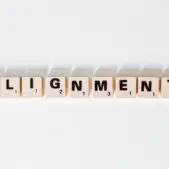Based on the results of a recent survey created by financial management company Think Money, we’re going to need to add a new page to our 12-month calendar to make up for all the productivity lost due to distractions in the workplace. Respondents to the survey indicated that they become distracted for 759 hours every year—a full 31 days.
There are a few distractions we can’t do much about—chatty colleagues and inclement weather—but one element that employees shouldn’t have issues with are the technology and tools that they use to “increase productivity.”
In his recent Ted Talk, Tristan Harris explained that the internal systems currently being used in offices around the world are in fact creating more distractions, instead of reducing them. Throughout his career Harris has spent time at Apple, Wikia, Apture and Google as a design ethicist and product philosopher.
Here are some of the key takeaways from his lecture, entitled “How Better Tech Could Protect Us From Distraction.”
Interruption is a learned behavior
According to Harris, it takes the average employee 23 minutes to refocus their attention after becoming distracted. Worse, the more we are interrupted, the greater our proclivity for self-interrupting.
Today, the average worker now self-interrupts every 3.5 minutes. That means every time a colleague emails you and a notification pops up on your screen while you’re working, they’re reinforcing the habit of distraction.
In terms of time management, workplace messaging systems are like slot machines
Even though most individuals spend only a few cents every time they pull the lever of a slot machine, the casino mainstays still generate more revenue each year than movies, amusement parks and baseball combined.
Most people won’t think twice about dropping a nickel into a slot machine, just like they won’t consider opening up their email or messaging system to be a major distraction.
But if you’re constantly bombarded with messages while you’re focusing on a project, you can end up distracted enough to set your work back by weeks or months, as previously demonstrated by Think Money’s survey.
Workplace technology doesn’t have to be an all-or-none proposition
Many business leaders fall into the thinking that they must fully integrate technology into the workplace and accept the potential distractions, or cut it out entirely. But Harris argues that the problem isn’t interruptions, per se, but rather avoidable distractions that are the problem.
More conscientious design can reduce workplace distractions
Many large businesses today have adopted intranets, applications or other internal systems to increase productivity. But these systems can also be rife with distractions if they are also a platform for internal communication between colleagues.
Harris believes the key to reducing workplace distractions is to find a way to design these systems to ensure that workers can remain focused on a task without sacrificing other individuals’ need to communicate with them.
How does Harris believe this can be accomplished?
He used the example of two employees working on a project together. One employee is focused on generating a document, while the other has just remembered he needs her to email it when she’s finished. But if he emails her, she may become distracted and take longer to complete the document. If he doesn’t email her, he may forget to ask at a later point in time.
By adding features to the messaging service, individuals in the middle of a project can put up a “do not disturb” message, which will still enable messages to be sent to a queue to be read at a later point in time. This would prevent distractions, while also allowing her colleague to send an email before they forgot about it themselves.
Harris’ assertion that design can have a direct, positive impact on worker productivity is a critical message to all business leaders today. Implementing new technology and software into the workplace alone will not necessarily equate to greater success. Taking the time to research and design a system that will foster a productive workplace cannot be understated.
Watch Tristan Harris’ full Ted Talk on Design and Distraction to learn more about finding or creating a successful strategy for the technology your organization uses to empower employees.


